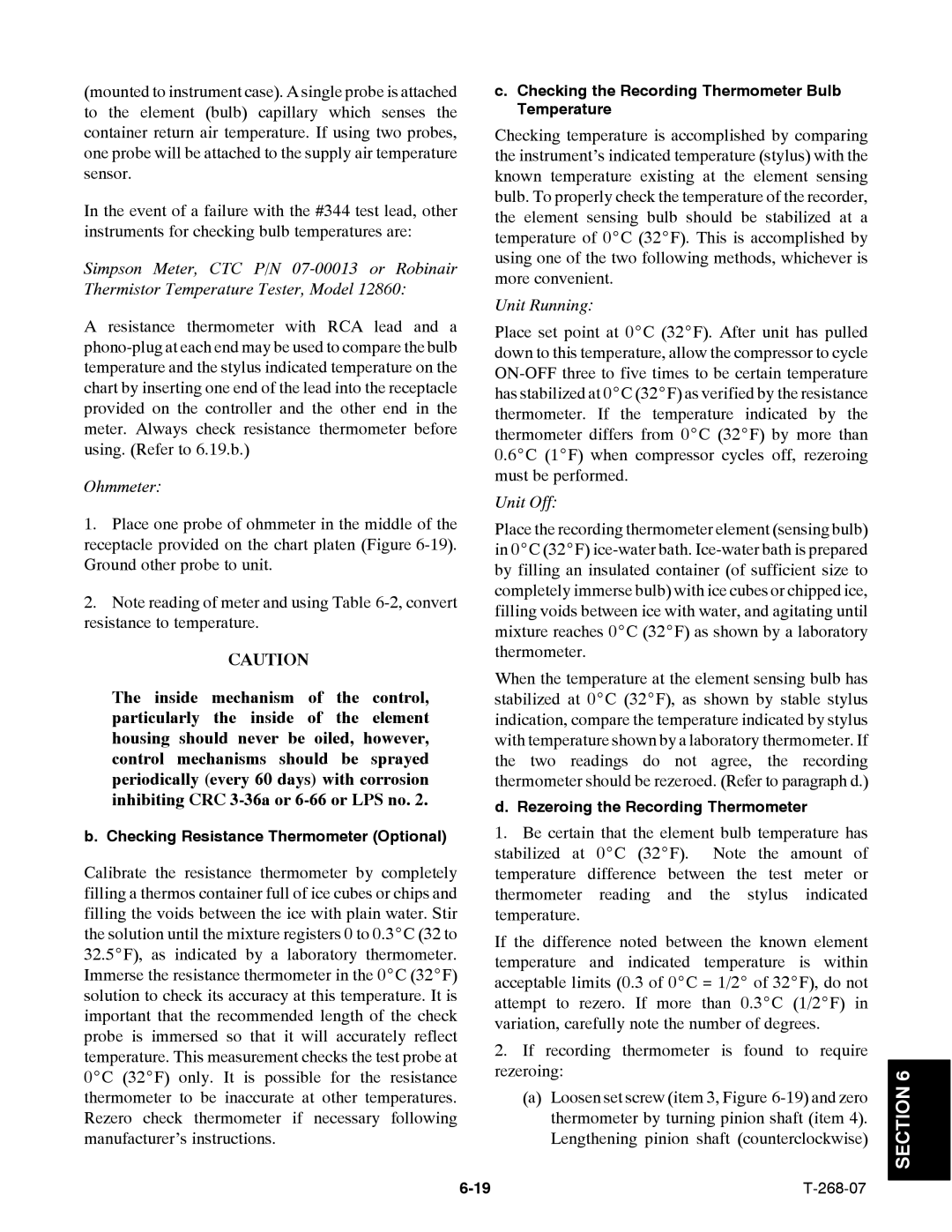
(mounted to instrument case). A single probe is attached to the element (bulb) capillary which senses the container return air temperature. If using two probes, one probe will be attached to the supply air temperature sensor.
In the event of a failure with the #344 test lead, other instruments for checking bulb temperatures are:
Simpson Meter, CTC P/N
A resistance thermometer with RCA lead and a
Ohmmeter:
c.Checking the Recording Thermometer Bulb Temperature
Checking temperature is accomplished by comparing the instrument’s indicated temperature (stylus) with the known temperature existing at the element sensing bulb. To properly check the temperature of the recorder, the element sensing bulb should be stabilized at a temperature of 0_C (32_F). This is accomplished by using one of the two following methods, whichever is more convenient.
Unit Running:
Place set point at 0_C (32_F). After unit has pulled down to this temperature, allow the compressor to cycle
Unit Off:
1.Place one probe of ohmmeter in the middle of the receptacle provided on the chart platen (Figure
2.Note reading of meter and using Table
CAUTION
The inside mechanism of the control, particularly the inside of the element housing should never be oiled, however, control mechanisms should be sprayed periodically (every 60 days) with corrosion inhibiting CRC
b. Checking Resistance Thermometer (Optional)
Calibrate the resistance thermometer by completely filling a thermos container full of ice cubes or chips and filling the voids between the ice with plain water. Stir the solution until the mixture registers 0 to 0.3_C (32 to 32.5_F), as indicated by a laboratory thermometer. Immerse the resistance thermometer in the 0_C (32_F) solution to check its accuracy at this temperature. It is important that the recommended length of the check probe is immersed so that it will accurately reflect temperature. This measurement checks the test probe at 0_C (32_F) only. It is possible for the resistance thermometer to be inaccurate at other temperatures. Rezero check thermometer if necessary following manufacturer’s instructions.
Place the recording thermometer element (sensing bulb) in 0_C (32_F)
When the temperature at the element sensing bulb has stabilized at 0_C (32_F), as shown by stable stylus indication, compare the temperature indicated by stylus with temperature shown by a laboratory thermometer. If the two readings do not agree, the recording thermometer should be rezeroed. (Refer to paragraph d.)
d. Rezeroing the Recording Thermometer
1.Be certain that the element bulb temperature has stabilized at 0_C (32_F). Note the amount of temperature difference between the test meter or thermometer reading and the stylus indicated temperature.
If the difference noted between the known element temperature and indicated temperature is within acceptable limits (0.3 of 0_C = 1/2_ of 32_F), do not attempt to rezero. If more than 0.3_C (1/2_F) in variation, carefully note the number of degrees.
2.If recording thermometer is found to require rezeroing:
(a)Loosen set screw (item 3, Figure
